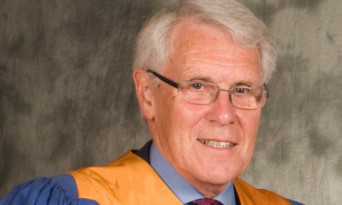Dundee University scientists have made a breakthrough that could produce better drugs for tackling leukaemia.
They have found a new way of killing cancer cells in patients with a certain kind of the disease.
The research team led by Dr Sudhir Tauro looked at chronic lymphocytic leukaemia (CLL), the most common form in the western world, and in particular how it reacted to treatment with the drug Tenovin.
The treatment was developed jointly by scientists in St Andrews and Dundee several years ago and was known to trigger the death of other types of cancer cells by increasing levels of the “guardian angel” protein p53 within cells.
Dr Tauro and his team found that, when treated with Tenovin, the CLL cells died, but without showing a change in p53 levels.
The research team then discovered that, in leukaemic cells, Tenovin is able to interfere with the process of self-digestion that they use to protect themselves during periods of stress.
“This process, called autophagy, is important to the survival of all cells,” said Dr Tauro, of the Dundee Cancer Centre, based at the university.
“It is noteworthy that, while it has the important effect of disrupting this process in CLL cells, Tenovin did not affect normal blood-forming cells.
“Based on these findings, we can now exploit that difference and begin to develop safer anti-leukaemic drugs for CLL.”
Current anti-leukaemia drugs often cause toxicity-related problems, particularly in older patients, where treatment can affect a normal blood count. They also tend to become less effective when used repeatedly.
The study led by Dr Tauro has been funded by the charity Tenovus, which also supported the original development of Tenovin.
Professor Peter Howie, of Tenovus Scotland, said, “The aim of Tenovus Scotland-Tayside is to support medical research in Tayside which will ultimately lead to the benefit of patients.
“Tenovus in Tayside is delighted to see that its investment in the development of Tenovin is being taken forward by Dr Sudhir Tauro’s exciting work in leukaemia.”
The results of the research are published online by the journal Scientific Reports.
The new research involved scientists from the Universities of Dundee, St Andrews and Bradford, and colleagues in Sweden.
“This was a cross-disciplinary project and it shows the importance of cooperating with experts in related disciplines to advance translational research,” said Dr Tauro.
“We must also pay testament to the generosity of patients in donating leukaemic samples for research to Tayside Tissue Bank. Without them, research like this would not be possible.”
